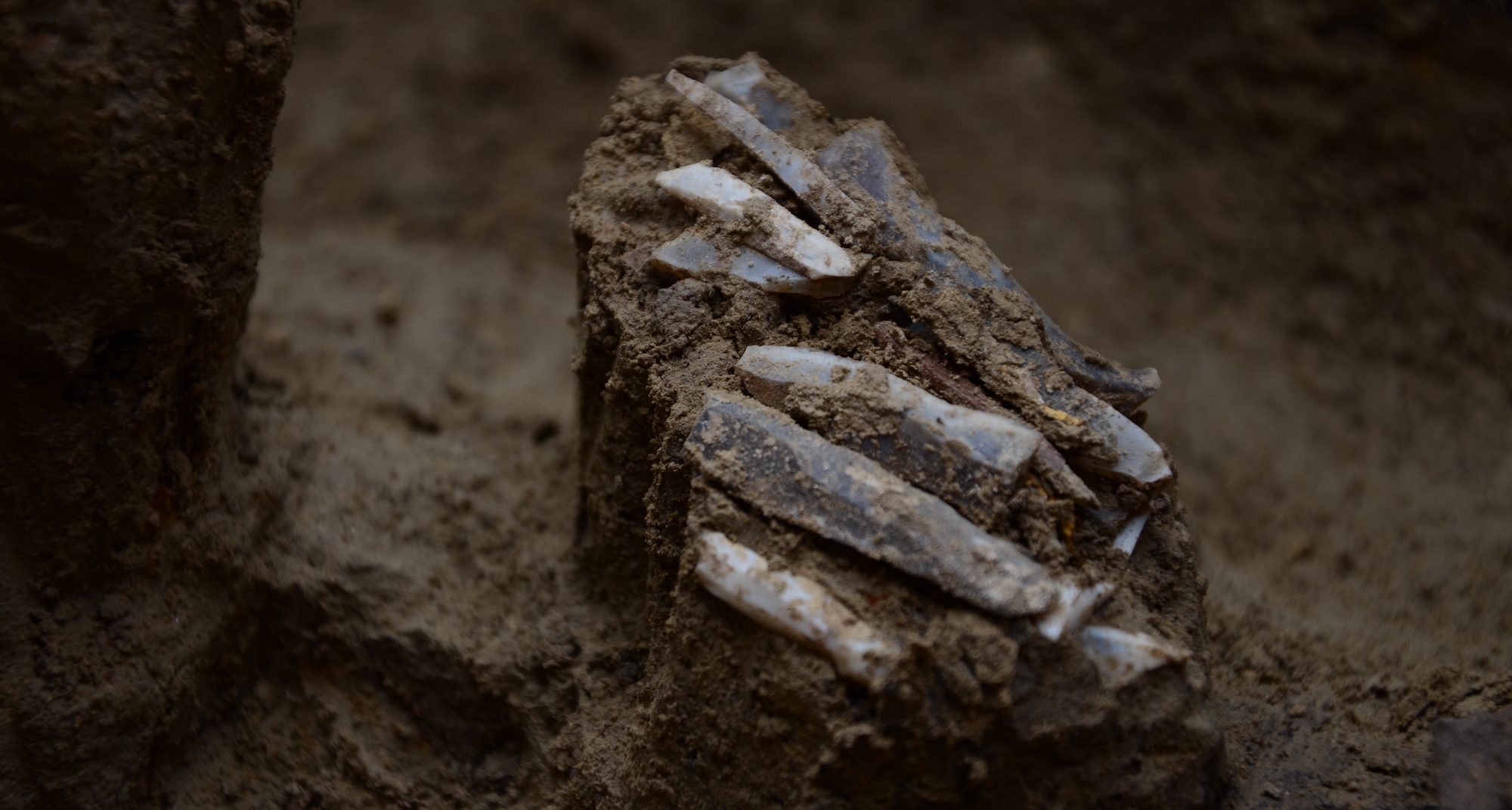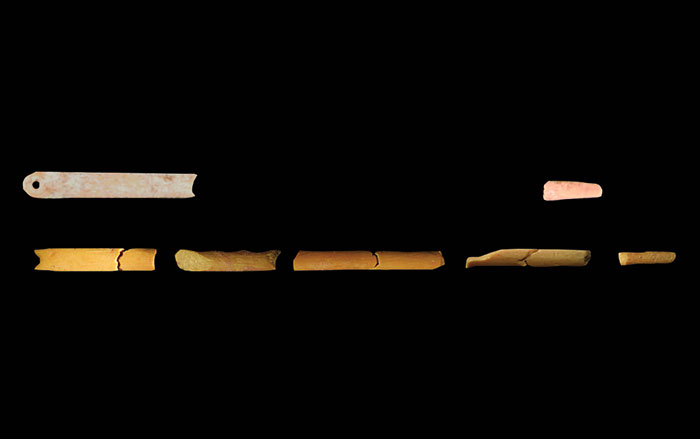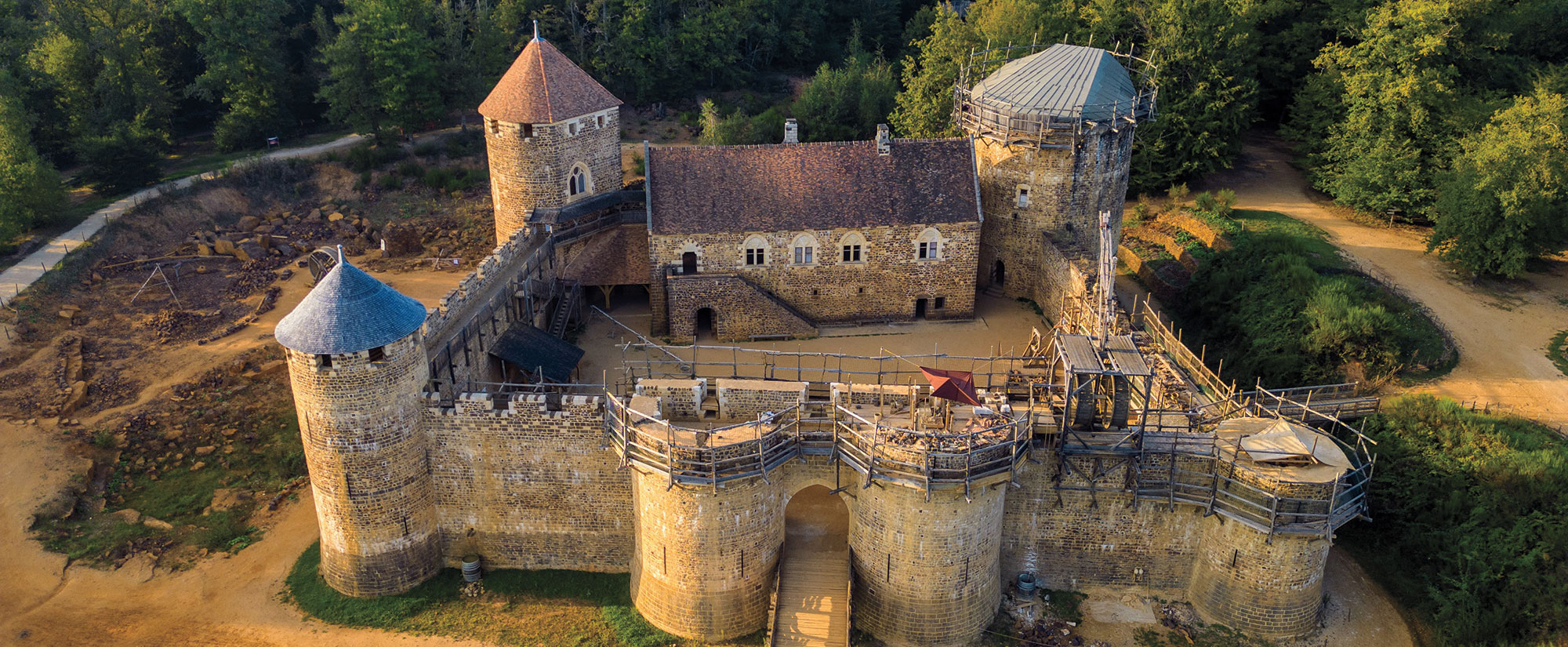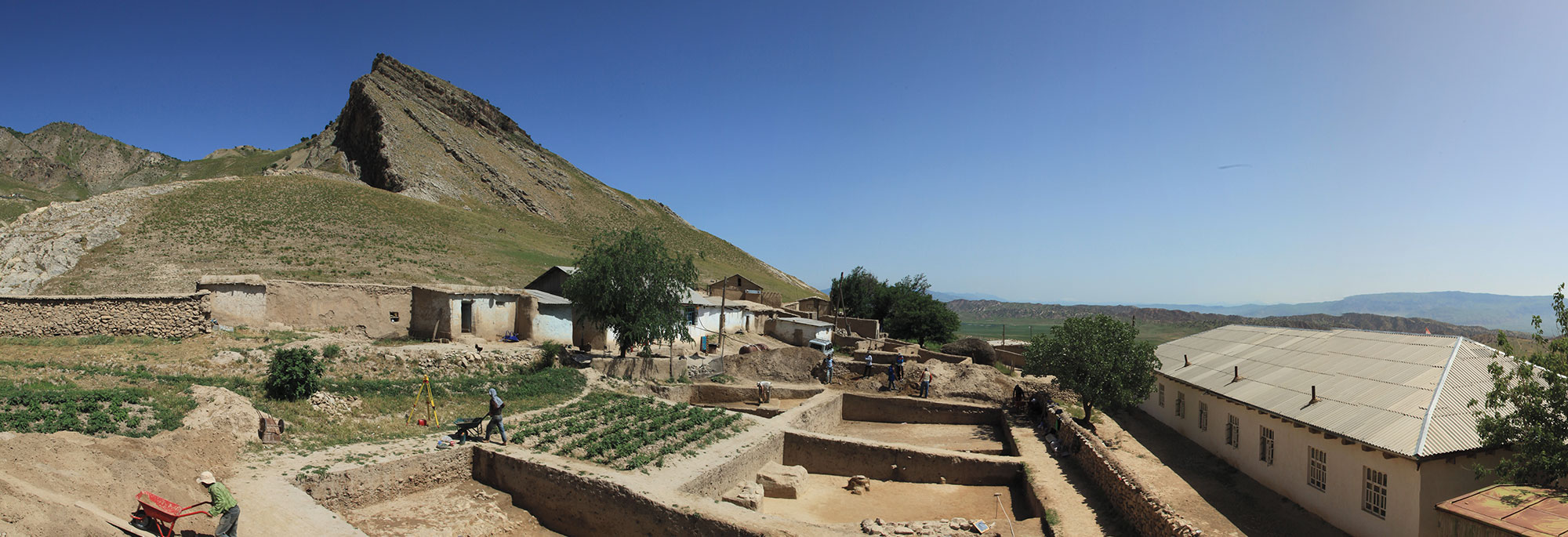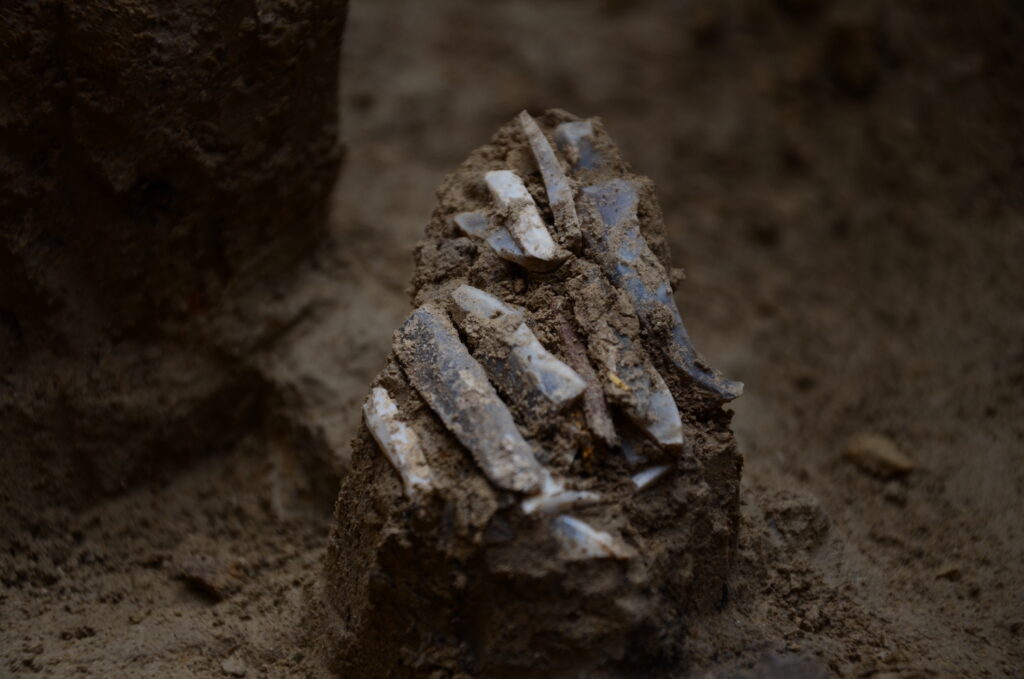
MORAVIA, CZECH REPUBLIC—Thousands of years ago, an Ice Age hunter set down a small pouch containing essential survival tools beside a campfire in what is now the Czech Republic, but never came back to retrieve it. ZME Science reports that archaeologists recently recovered the objects at a site known as Milovice IV in southern Moravia. Although the leather or hide pouch had long since decayed, the team found 29 small blades and points. Some had been used as projectiles on the tips of arrows or spears, while others seemed to have been used to cut or scrape animal skins. Most of them showed wear patterns and signs that they had been heavily used in their lifetime. Carbon dating from charcoal layers associated with the artifacts revealed they were between 29,550 and 30,250 years old, placing them within the time when the Gravettian culture flourished across Ice Age Europe. Perhaps most surprisingly, the raw materials used to produce the objects came from a variety of sources and locations—flint cobbles, radiolarites, and even opal were obtained in areas as far as 80 miles away from the site. Researchers believe that the items comprise the personal toolkit of one expert hunter-gatherer, although they are a bit perplexed why the individual would have held on to so many partially broken pieces. “It is possible the hunter kept them in the hope of recycling them or even for their sentimental value,” said Dominik Chlachula of the Czech Academy of Sciences. Read the original scholarly article about this research in Journal of Paleolithic Archaeology. To read more about the Gravettian period, go to "The Birth of Venus," one of ARCHAEOLOGY's Top 10 Discoveries of 2022.


